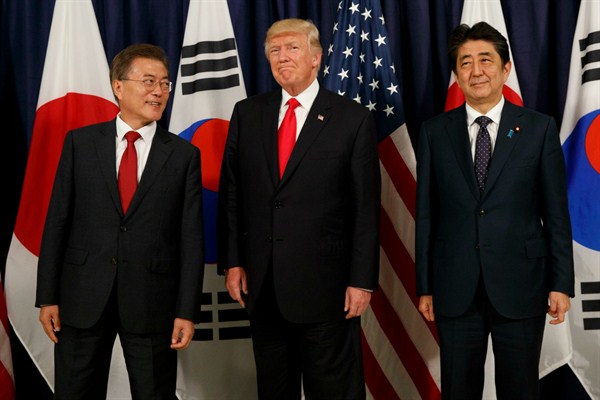In his first six months in office, President Donald Trump has appeared to reorder the foundations of U.S. foreign policy, alienated many traditional U.S. allies, remade the Republican Party and generally dominated American public discourse with his wild pronouncements and seemingly endless scandals. Outside the United States, however, it is a different story. In Asia especially, Trump’s impact, though substantial, has been more marginal than in North America or Europe, where Trump has created a massive divide between Washington and the governments of major American partners like Germany and Mexico.
Overall, policymakers in Washington and across Asia have come away from the start of the Trump presidency somewhat reassured that he has not totally upended all aspects of U.S. Asia policy. To be sure, there is still considerable uncertainty about how the administration will handle North Korea, China and other challenges over the next three-and-a-half years. Trump himself has muddied the waters with public statements that seem more like vague threats than clear policy positions. And on trade and human rights—critical issues for many Asian nations—Trump risks seriously altering the existing order.
Yet on a range of issues, Trump’s Asia policies don’t differ dramatically from his predecessor, Barack Obama. Despite making some initial moves shortly after he won the presidential election that suggested he might be intensely confrontational with China, Trump’s policy toward Beijing has been more mixed. He has pursued freedom of navigation operations in the South China Sea, but without as much fanfare as expected—although they still upset Beijing. He has publicly called on China to take a harder line toward North Korea, but also suggested he would step back and let China lead in dealing with Pyongyang.

